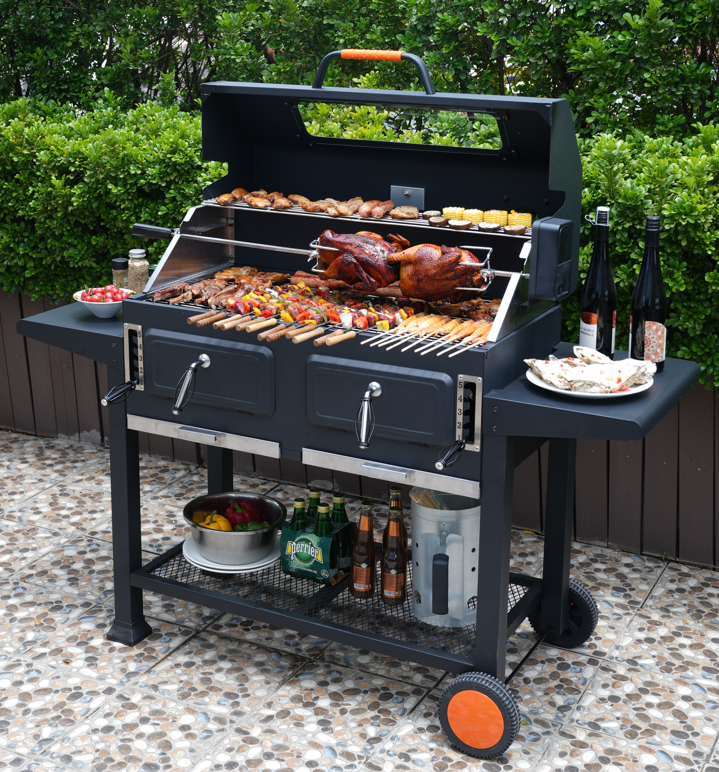If you’re diving into the world of low and slow grilling, mastering the right equipment, fuel, and techniques is key. Whether you're using a BBQ grill with smoker, a charcoal smoker grill, or a basic charcoal grill and smoker, here’s a quick breakdown to get you started.
1. Choosing Your Smoker
There are many types of BBQ grills with smokers, including offset charcoal smoker grills, pellet grills, and gas smokers. Beginners should start with an affordable portable charcoal grill and smoker to learn smoke control, airflow, and temperature management before upgrading.
2. Fuel Selection
For authentic smoky flavor, lump charcoal is ideal—it burns clean and provides steady heat. Avoid quick-light charcoal with chemicals, especially for slow cooking. Machine-made briquettes work well for versatility in a standard charcoal grill and smoker.
3. Wood Pairing Tips
Match wood types to your meat:
Red meat (beef, brisket): Hickory or ironbark for bold, peppery smoke.
White meat (chicken, pork): Fruitwoods like apple or cherry for a lighter, sweeter flavor.
Remember: Smoke is a seasoning—don’t overdo it!
4. Must-Have Tools
Thermometer (crucial for precision)
Flamethrower igniter (light charcoal in seconds)
Spray bottle (apple cider vinegar + broth keeps meat moist)
Aluminum foil (helps manage temperature stalls)
Heat-resistant gloves (safety first!)
5. Temperature & Seasoning
Use Fahrenheit for precision (205°F ≈ 96°C).
Dry rubs create a flavorful "bark" (crust), while wet marinades suit quicker cooks.
Final Pro Tips
"Low and slow" can’t be rushed—patience delivers tender results.
"If you’re lookin’, you ain’t cookin’"—peeking causes heat loss.
Never serve undercooked meat—wait for perfection!
With the right BBQ grill with smoker, quality fuel, and these tricks, you’ll master the art of smoky, fall-off-the-bone barbecue. Fire it up and enjoy!
2025-07-17
More

